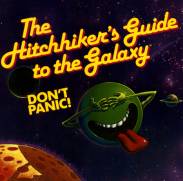
I couldn't get this to link in the article.
Posted on 07/18/2002 4:13:04 PM PDT by blam
Nasa discovers 'motorway' network between planets
Nasa says an interplanetary superhighway discovered by one of its engineers will make space travel simpler.
The solar system 'motorway' is a virtual network of winding tunnels and channels around the Sun and planets.
Each planet and moon has five locations in space called Lagrange points, where one body's gravity balances another. Spacecraft can orbit at those points while burning little fuel.
He came up with the superhighway by mapping out all the possible flight paths among the Lagrange points to see how fast or slow the spacecraft would travel.
Experts say the superhighway flight path will drastically cut the amount of fuel needed for future missions.
Nasa hopes to use the system for future human space missions by building spacecraft docking and repair platforms around the Lagrange points.
The system was discovered by Nasa Jet Propulsion Laboratory engineer Martin Lo.
He's using the theory to draw up a flight path for the Genesis Sun probe and plans to map out a superhighway for the entire solar system.
Mr Lo told the Nasa website: "Designing the Genesis spacecraft's flight path with traditional methods used to take eight weeks - now we design a new flight path in less than a day.
"The savings on fuel translates into a better and cheaper mission."
Story filed: 11:30 Thursday 18th July 2002

I couldn't get this to link in the article.
It's live using the Globe or weekly world news.
I don't belive this story for a minute. If NASA discovers something they have not been shy to put it in the news themselves.
(Hitchhiker's Guide to the Universe)
Not according to the Hitchhiker's Guide to the Galaxy, which describes Earth as "mostly harmless".

And we don't even have one from Hawaii to the mainland.
BTW, aren't those Lagrange points full of meteors and such?
Have they written anything since?
We oppose all government restrictions upon voluntary peaceful use of outer space. We condemn all international attempts to prevent or limit private exploration, industrialization, and colonization of the moon, planets, asteroids, satellite orbits, Lagrange libration points, or any other extra-terrestrial resources. We repudiate the principles contained in the U.N. Moon Treaty. We support the privatization of the National Aeronautics and Space Administration.
But an orbit consultant found a solution. They sent it even higher and around the moon. On the way back they eased into its correct orbit. Not enough fuel to get to 22,300 miles, but enough to go to the moon and back.
The Trojan asteroids are at two of the Sun-Jupiter libration points.
Just means you have to plow the route regularly, right? LOL!
Here's the quote from the http://www.genesismission.org home page:
JPL engineer is in the running for an award for "work so revolutionary that it has changed the direction, if not completely reversed, their field."
Martin W. Lo of the Jet Propulsion Laboratory, Pasadena, Calif., was nominated for the Discover Magazine Innovation Award in the field of Aerospace for his work on applying "chaos theory" to the design of trajectories like the one used by Genesis, computed using his LTool which has defined what Lo calls an "InterPlanetary Superhighway": paths through space that depend on balanced-gravity points between planets. This helps spacecraft fly though the solar system on very little fuel. Team member Kathleen Howell, professor of aeronautics and astronautics, Purdue University, West Lafayette, IN, joins him in his nomination.
Meet Martin Lo in this interview that takes the reader along the "InterPlanetary Superhighway" and into the changing world of engineering.
The 1984 Moon Treaty was not adopted. However, the 1967 Outer Space Treaty was, and that is the one they should be going after.
Disclaimer: Opinions posted on Free Republic are those of the individual posters and do not necessarily represent the opinion of Free Republic or its management. All materials posted herein are protected by copyright law and the exemption for fair use of copyrighted works.